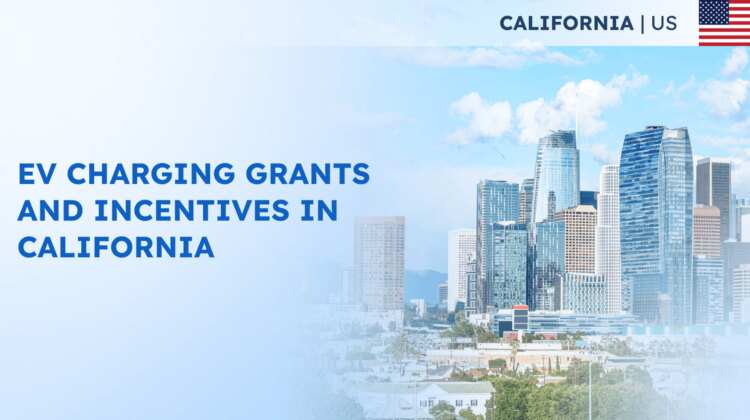Last updated: February 21, 2024
PG&E’s EV Infrastructure Rule 29
Pacific Gas and Electric Company (PG&E) is driving the electrification of transportation in California through its innovative Electric Vehicle Infrastructure Rule 29. This initiative simplifies the process of interconnecting electric vehicle (EV) chargers, making it more cost-effective for customers and supporting the state’s ambitious greenhouse gas reduction goals.
Overview of Rule 29
PG&E’s Electric Vehicle Infrastructure Rule 29 covers the design and deployment of service extensions from the company’s electrical distribution line facilities to the service delivery point for separately metered EV charging stations. This initiative streamlines the process of EV charger interconnection and significantly reduces costs for customers, thereby promoting the widespread adoption of EV infrastructure.
Key Benefits
Rule 29 simplifies the process for customers to interconnect EV chargers, eliminating complexities and streamlining the installation process by coordinating the design and deployment of service extensions. It makes it less costly for customers to install EV charging equipment by covering expenses related to planning, designing, engineering, and maintaining line EV infrastructure installed. Moreover, Rule 29 contributes to California’s greenhouse gas reduction goals, driving the transition to cleaner transportation options and reducing emissions.
Eligibility and Application Process
Applicants eligible for Rule 29 must plan to purchase and install qualified EV charging stations, excluding those in single-family residences, and commit to maintaining and operating the infrastructure for at least five years. Customers can apply online or contact PG&E’s Building and Renovation Service Center for assistance.
Cost Coverage
PG&E covers costs related to equipment on the utility-side of the meter under Rule 29, including planning, designing, engineering, and maintaining line EV infrastructure. Customers are responsible for costs associated with charging station installation and other customer-side infrastructure. Charging stations must be installed within 30 days after the service point is energized or within a mutually agreed timeline.
Duration and Rate Plans
Customers are required to own and maintain charging stations for a minimum of five years. As default, participants are enrolled in PG&E’s Business EV rate, with the option to change to another Time-Of-Use rate if desired.
SCE Charge Ready Program
Southern California Edison (SCE) aims to assist EV drivers throughout their electrification journey. Recognizing the diverse challenges inherent in transitioning to EVs, SCE offers a variety of programs and resources tailored to support drivers in their electrification endeavors.
The Charge Ready Program offered by SCE is a comprehensive initiative designed to support the adoption of EVs by covering various costs associated with the installation of EV charging infrastructure. One key aspect of this program is its coverage of expenses related to the service drop, meter, panel, and circuit dedicated to EV charging.
Unlike the EV Infrastructure Rule 29, which extends SCE’s infrastructure up to the interconnection point with the customer’s provided panel, the Charge Ready Program ends its make-ready services at the interconnection point with the customer charging equipment, providing AC service. This means that while SCE covers costs associated with the service drop, meter, panel, and circuit, the customer is responsible for providing the panel and constructing all conduits and wires leading to the interconnection point with the charging equipment.
This approach allows for greater flexibility and customization in the installation process, empowering customers to tailor the infrastructure to their specific needs and preferences. By partnering with SCE through the Charge Ready Program, customers can take advantage of financial assistance and technical expertise to facilitate the seamless integration of EV charging infrastructure into their properties, contributing to the widespread adoption of electric vehicles and the transition to a cleaner transportation ecosystem.
PG&E EV Infrastructure Rule 29 vs. SCE Charge Ready Program
While SCE and PG&E both prioritize electrification, they diverge in their approaches. SCE focuses on fleet operators, offering tailored services and incentives, while PG&E’s Rule 29 initiative targets a broader clientele, including residential, commercial, and public entities. SCE’s programs feature direct incentives, rebates, and grants, aiming to boost EV adoption. Conversely, PG&E’s Rule 29 initiative focuses on coordinating service extensions to minimize electrical upgrades. SCE’s Charge Ready Program covers costs for EV charging infrastructure, including service drop, meter, panel, and circuit. Unlike Rule 29, which extends infrastructure to the customer’s panel, SCE’s program stops at the interconnection point, requiring customers to provide their panel and complete wiring to the charging equipment.
Other PG&E and SCE EV Initiatives
PG&E EV Fleet Program
PG&E’s EV Fleet program supports level 2 and DC fast chargers in a variety of installation configurations based on a fleet operator’s needs. Eligible customers may be able to receive 50% of the cost of an eligible charging station up to $42,000. They also offer incentives to build out the necessary infrastructure to convert to an electric fleet with rebates ranging from $4,000 up to $9,000 for eligible vehicles.
PG&E understands that building and maintaining electrical infrastructure can be a barrier to electrification. To simplify the process, PG&E takes responsibility for constructing, owning, and maintaining all electrical infrastructure from the transformer to the customer’s meter. In certain cases, they may even cover behind-the-meter infrastructure. Fleet operators are only required to design, build, own, operate, and maintain the electrical infrastructure from the customer meter to the EV charger. This streamlined approach ensures that businesses can focus on their core operations while PG&E handles the technical aspects of electrification.
To participate in the EV Fleet Program, organizations must meet certain eligibility criteria:
- Be a PG&E Electric Customer, including Direct Access and retail customers.
- Own or lease the property where charging infrastructure will be installed.
- Acquire at least two medium- or heavy-duty electric fleet vehicles by 2024.
PG&E’s EV Fleet Program supports both Level 2 and DC fast chargers, offering flexibility to fleet operators. While participants are responsible for procuring and installing the chargers, they may be eligible for rebates based on charger specifications, industry type, and location:
- Up to 50 kW: 50% of charger cost, up to $15,000.
- 50.1 kW – 149.9 kW: 50% of charger cost, up to $25,000.
- 150 kW and above: 50% of charger cost, up to $42,000.
These rebates apply to school buses, transit buses, and disadvantaged communities. Fortune 1000 companies are not eligible for these rebates.
PG&E EV Fast Charge Program
PG&E’s EV Fast Charge Program pays for, coordinates, and facilitates construction of the electrical infrastructure (50kW or higher charging capacity) from the utility pole to the parking space at a limited number of competitively selected sites on the PG&E territory. Site hosts and vendors interested in participating in the EV Fast Charge Program can explore opportunities to install fast charging infrastructure and potentially qualify for rebates of up to $25,000 per charger.
PG&E Residential EV Charging Rebate
PG&E offers a $700 rebate for income-eligible households to support residential EV charging.
Eligible households receive $700 for PG&E-approved EV charging equipment. The program aims to ease residential EV charging while reducing costly electrical upgrades. Funding is provided by California’s Low Carbon Fuel Standard. Applicants must meet income limits and agree to program terms. Required documentation includes proof of enrollment in a Public Assistance Program and proof of equipment purchase.
SCE Fleet Electrification Support
SCE understands the distinct requirements of fleet operators and provides a comprehensive suite of services to facilitate their transition to electric:
- Fleet survey: Operators can assess their fleet’s readiness for electrification, identifying potential obstacles and opportunities for streamlining the transition process.
- Fleet Fuel DRPEP Capacity Calculator: Operators can determine the necessary charging capacity for their fleet, aiding in informed infrastructure planning and investment decisions.
- EV readiness studies: These studies offer valuable insights into the feasibility and advantages of electrifying fleets, guiding operators’ electrification strategies.
- Grant writing assistance: SCE assists in accessing funding opportunities and provides expert guidance on securing grants to support electrification initiatives.
- Charge Ready program: This program offers incentives and support for installing EV charging infrastructure, facilitating the transition to electric with financial assistance and technical expertise.
- Rule 29 Loan Loss Reserve: SCE provides a program to mitigate financial risks associated with EV infrastructure investments, offering solutions to address concerns about financing large-scale projects.
- Drayage truck rebate: Operators transitioning drayage trucks to electric can benefit from incentives aimed at reducing emissions and improving air quality.
SCE Planning and Advisory Services
SCE collaborates with operators to develop comprehensive electrification roadmaps tailored to their specific needs. Collaboration with SCE informs grid planning and capacity needs, ensuring seamless integration of electrification plans into the broader energy landscape. SCE’s advisory services aid in developing robust infrastructure plans aligned with electrification goals, optimizing investment and maximizing efficiency. SCE’s expertise in forecasting and system planning supports informed decisions throughout the electrification journey, providing valuable insights for strategic decision-making and long-term success.
SCE is committed to supporting electrification across every aspect of the journey. From initial planning and assessment to implementation and beyond, SCE serves as a trusted partner in building a sustainable and electrified future.
Conclusion
In conclusion, PG&E and SCE are actively promoting EV adoption in California through distinct yet complementary initiatives. PG&E’s Rule 29 initiative streamlines EV charger installation and reduces costs for a broad customer base, while SCE’s programs target fleet operators with specialized services and incentives. Despite their differences in scope and target audience, both utilities play crucial roles in advancing California’s transition to a cleaner and more electrified transportation ecosystem.







